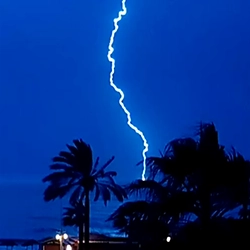Weather in Europe - Weather observation & satellites
Satellite
Clouds
Rain
RDT-Thunderstorm
Lightnings
Temperatures
SIGMET
Weather radar
Radar
FRAME TIME
RDT Cells diagnosed: Triggering Triggering from split Growing Mature | Cell at +30 min. gray
WEATHER OBSERVATION - WEATHER SATELLITE - WEATHER RADAR - NOWCAST
Weather data is recorded, processed and provided every 15 minutes.
Weather radar data every 5 minutes
Click on the map to access the corresponding weather event information SIGMET AVIATION WEATHER WARNINGS: SIGMET (significant meteorological phenomena) is a severe weather advisory that contains meteorological information concerning the safety of all aircraft. For airmen in the U.S., there is an additional category of SIGMET known as a convective SIGMET. These are issued for convection over the coterminous U.S. There are main types of internationally recognized SIGMETs per ICAO:
Thunderstorm
Icing
Limited visibility
Tropical Cyclone
Turbulences
Volcanic ash
Sand storms
Dust storms
Mountain obscuration
Mountain waves
*Overshooting top: A dome-like protrusion above a thunderstorm anvil, representing a very strong updraft and hence a higher potential for severe weather with that storm. A persistent and/or large overshooting top (anvil dome) often is present on a supercell. A short-lived overshooting top, or one that forms and dissipates in cycles, may indicate the presence of a pulse storm.
Mor about NWCSAF GEO CRRPh / Convective Rainfall Intensity here
Data sources: Clouds, Rainfall Intensity and RDT-Product: NWCSAF - copyright 2024 EUMETSAT, Lightnings strikes: DWD, Temperatures: Aviation Weather Center, Radar: Rainviewer || All data without guarantee



